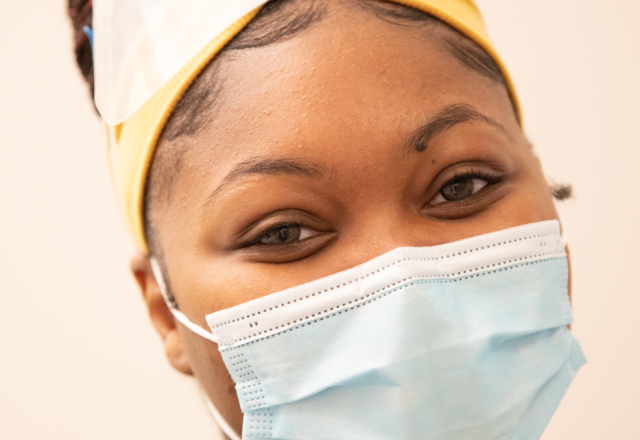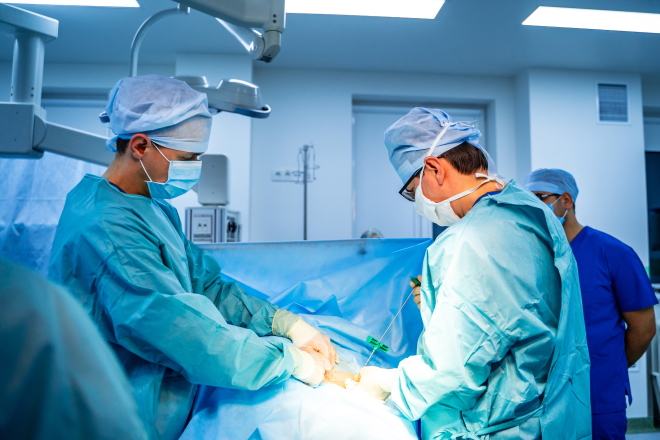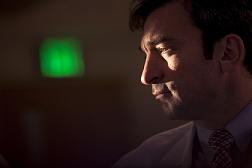Leukemia Treatments

After reviewing your lab results and accurately diagnosing your stage of leukemia, Johns Hopkins Kimmel Cancer Center will design a treatment plan tailored for each patient, based on their age, symptoms and type of leukemia. People with acute leukemias need to be treated immediately, to destroy the disease and eliminate symptoms. Those with chronic leukemia may not need to start treatment right away; in some cases, doctors prefer to monitor patients’ health closely and start treatment after the onset of symptoms. Chemotherapy (drug treatment to destroy leukemia cells) is the mainstay of leukemia treatment, and may incorporate multiple types of drugs. Radiation and surgery are contemplated only for cases in which leukemia cells have collected in definitive areas.
Chemotherapy
Depending on the type of leukemia, you may receive a single drug or a combination of two or more drugs. The medications may be prescribed as pills, or as fluids administered through a needle or tube inserted into a vein; through a tube inserted in the chest; or through injection into the cerebrospinal fluid.
Chemotherapy is usually given in cycles, with patients receiving treatment either in a clinic or at home. Some patients may need to stay in the hospital for treatment. Side effects can depend on which drugs were given and how much, but include fatigue, hair loss, poor appetite, nausea or vomiting, diarrhea, or infertility.
Patients with CML and some with ALL may receive drugs called targeted therapy, that use drugs that block the growth of leukemia cells. Side effects include swelling, bloating, weight gain, nausea or vomiting, diarrhea, muscle cramps or a rash.
Some leukemia patients receive drugs called biological therapy – treatments that improve the body’s defenses against the disease. They may be substances that bind to or kill leukemia cells, that help the immune system destroy leukemia cells or that slow the growth of leukemia cells. Some therapies cause a rash or swelling where the drug was injected. Other side effects include headache, muscle aches, fever or weakness.
Radiation Therapy
Radiation therapy uses high-energy rays to kill leukemia cells by damaging the genetic material they contain. This treatment can be used adjunctively to chemotherapy to control disease or eradicate local areas of disease. Some patients receive targeted radiation from a large machine aimed at the spleen, brain or other parts of the body where leukemia cells have collected. This type of therapy takes place five days a week for several weeks. Others may receive radiation directed to the whole body. These sessions are given once or twice a day for a few days, usually before a stem cell transplant.
The side effects of radiation therapy, including fatigue, can depend on the dose of radiation and the part of the body that is treated. For example, radiation to the abdomen can cause nausea, vomiting and diarrhea. In addition, skin in the area being treated may become red, dry, and tender. Hair loss in the treated area also may occur.

Surgery
Surgery usually is not an option for treating certain manifestations of leukemia when leukemia cells spread to organs via the blood stream and lymph vessels. In some cases of CLL, for example, doctors may recommend surgery to remove the spleen, an organ located in the abdomen behind the ribs that removes and destroys old red blood cells and helps fight infection. The procedure, called a splenectomy, is helpful if the spleen is destroying red blood cells and platelets.
Vaccine Treatment
Doctors at some medical centers including the Johns Hopkins Kimmel Cancer Center are conducting clinical trials to test novel vaccines for leukemia.
Research
New Leukemia Treatment Options
Read about the latest treatment options for leukemias.
 B.Douglas Smith, M.D., leukemia expert
B.Douglas Smith, M.D., leukemia expertOur leukemia experts did much of the groundbreaking work in the treatment of acute myeloid leukemia (AML), developing an intensive and effective drug treatment for this otherwise fatal disease. In addition, our experts pioneered timed sequential therapy (TST), a treatment strategy that specifically use chemotherapy drugs at an optimal time to best treat leukemias and prevent them from growing back.
Among the pivotal research areas shaping leukemia treatment, Johns Hopkins experts have led the following research advances:
- Dose-intensive, curative chemotherapy for minimal residual leukemia
- Pioneered clinical trials of the drug tipifarnib, known by its trade name Zarnestra, which blocks an enzyme called farnesyltransferase, which modifies certain cellular proteins so that they can attach to cellular membranes or other structures. The drug was first tested in adults with relapsed or therapy-resistant acute leukemia, and was the first clinical trial of a signal transduction inhibitor in AML.
- Studies of gene silencing through a process called methylation, which tags DNA with tiny chemicals that regulate the on/off switch of genes, have led to new clinical trials of drugs that inhibit this process in combination with drugs that block enzymes controlling gene expression.
- Johns Hopkins researchers were the first to clone the FLT3 gene, now know to be mutated in certain patients with an aggressive form of acute myelogenous leukemia. The scientists have tested drugs that block the gene’s protein products in combination with chemotherapy agents.
- Supportive care improvements including ridding the GI tract of bacteria harmful to cancer patients with antibiotics called quinolones.
Treatment Approaches
The goal of the leukemia research program at the Johns Hopkins Kimmel Cancer Center is to develop new therapies based on the biologic and molecular aspects of the disease to improve cure rates and quality of life. Kimmel Cancer Center leukemia experts are leaders in developing new standards of care and directing clinical trials at the forefront of discovery in leukemia research.
Oncologist-researchers at Johns Hopkins continually seek new agents or new combinations of therapies to maximize success for each patient. Chemotherapy cycles offered to most patients with leukemias and MDS includes traditional cytotoxic chemicals plus other targeted therapies, such as drugs that block abnormal signals sent out by cancer genes, explains oncologist B. Douglas Smith, M.D., associate professor of oncology. Oncologists also are using growth factors to try to normalize how cancer cells grow, making them less resistant to chemotherapy, and they are studying and looking at agents to control cancer stem cells. Epigenetic agents, such as Vidaza or Decitabine (DNA methlyating agents) and histone deacetylase inhibitors, under development attempt to “unsilence” genes that have been silenced by acute leukemias and myelodysplastic syndrome (MDS). Scientists also are testing the KGEL vaccine alone and in combination with other agents in patients with CML and AML.
